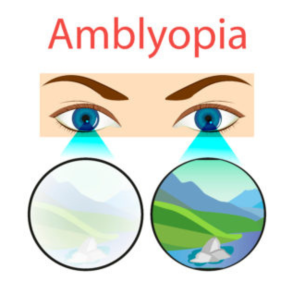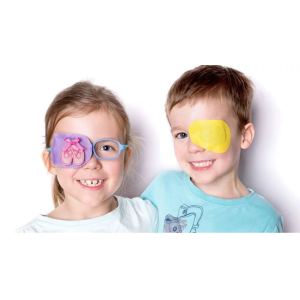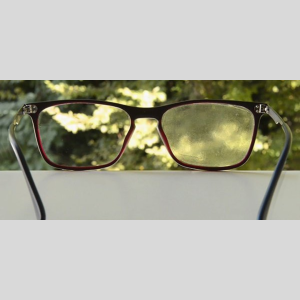
What is a lazy eye?

Lazy eye is the non-scientific term that represents amblyopia. The condition results from the poor advancement of eye teaming (or eyes working together). The development usually gets affected during the critical period of the first 7-8 years of life. This is a crucial functional vision agility that enables both eyes to work together and focus on the same point in space. When they don’t be able to perform this, it leads to one or both eyes not seeing clearly.
Why does lazy eye happen?
The reason for this growing problem of lazy eyes is that the brain doesn’t develop the mastery to see clearly in one or both eyes. The visual cortex is the part of the brain responsible for this function. The weaker eye receives fewer visual signals. And the eyesight of a person with amblyopia cannot be modified with glasses alone.
Common causes of this eye condition described by eye care professionals includes:
Muscle imbalance
The difference in sharpness of vision between the eyes
A significant difference between the prescriptions in each eye — often due to farsightedness but sometimes to nearsightedness or an uneven surface curve of the eye, typically described as astigmatism — can result in a lazy eye.
Glasses or contact lenses are commonly used to correct these refractive problems. In some children, a lazy eye is caused by a blend of strabismus and refractive problems.
Deprivation
A problem with one eye — such as a cloudy area in the lens of our eyes or medical terms a cataract — can prohibit clear vision in that eye. Deprivation amblyopia, in the beginning, requires urgent treatment to prevent permanent vision loss. It’s described as the most severe type of amblyopia.
Treatment
It’s important to start treatment for lazy eyes as soon as it is detected, possibly in childhood when the complicated connections between the eye and the brain are shaping. Treatment options depend on the roots of the lazy eye and treat on how much the condition is affecting your child’s vision. Your eye care professionals might recommend following some process
Corrective eyewear

Prescribed glasses or contact lenses by physicians can correct problems such as nearsightedness, farsightedness, or astigmatism that result in lazy eyes.
Eye patches

To stimulate the weaker eye, the child must wear an eye patch over the eye with better vision for two to six or more hours a day. In isolated cases, wearing an eye patch too long can cause amblyopia to develop in the patched eye. However, it’s usually reversible.
Bangerter filter

This special filter is placed on the eyeglass lens of the stronger eye. The filter blurs the stronger eye and, like an eye patch, works to stimulate the weaker eye.
Eyedrops

An eyedrop called atropine or Isopto Atropine can temporarily blur vision in the stronger eye. Usually prescribed by eye care professionals for use on weekends or daily, the use of the drops motivates your child to use the weaker eye and offers an alternative to a patch. Side effects of this drop include sensitivity to light and eye irritation.
Vision Space Optometrists, renowned eye care professionals for Myopic eye exams in Malaysia provide the best eye care service by a group of trusted, passionate, and learned optometrists using their experience and latest eye care equipment to fight myopia and correct vision problems during driving. At Vision Space, we enjoy great service from others. Likewise, we want to be known to be providers of great service to our customers. We will go the extra mile to serve you for many, many, many years! We promise to provide the best eye care possible through our team of trusted and passionate optometrists using the latest eye care equipment to keep your eyes healthy forever. Also, we constantly seek and source internationally for several types of eyewear that look great on you, are super comfortable, and enhance your personality. Kindly visit our official website to get the best eye care and the best eyewear as per your choices and preferences- http://www.visionspace.com.my/.

